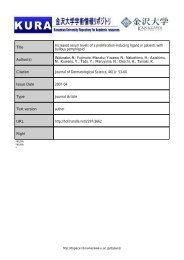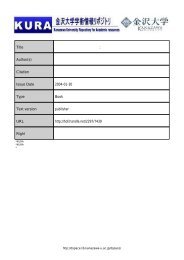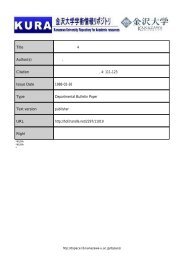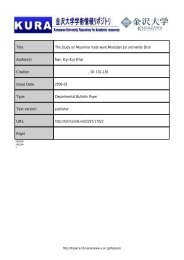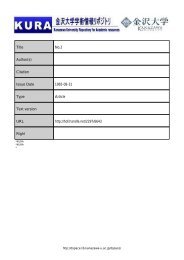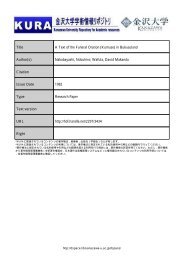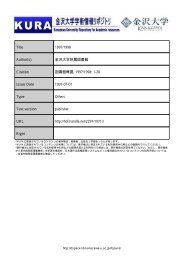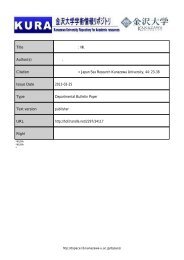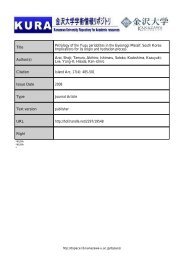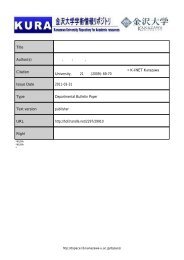Title Krafft temperature and enthalpy of solution of N-acyl amino acid ...
Title Krafft temperature and enthalpy of solution of N-acyl amino acid ...
Title Krafft temperature and enthalpy of solution of N-acyl amino acid ...
You also want an ePaper? Increase the reach of your titles
YUMPU automatically turns print PDFs into web optimized ePapers that Google loves.
simplification <strong>of</strong> calculation in this study. The dimerization energy <strong>and</strong><br />
the optimized geometry were calculated by using the restricted<br />
Hartree-Fock (RHF) procedure with the 6-31 + G* basis set. All<br />
calculations were performed using Gaussian 98 [25].<br />
Obtained geometries <strong>of</strong> L-L <strong>and</strong> D-L dimers are shown in Fig. 6(b).<br />
Each dimer is built by coordination <strong>of</strong> two carboxylates to two sodium ions<br />
simultaneously. The top view <strong>of</strong> the two structures seem to be similar to<br />
each other. Indeed the calculated dimerization energies were –93.856 <strong>and</strong><br />
–93.869 kJ mol -1 for the L-L <strong>and</strong> D-L dimers, respectively. However, the<br />
difference is clear from the side view <strong>of</strong> the structures in Fig. 6(c). In the<br />
D-L dimer, each alanine residue is situated in the trans position through the<br />
bonding between carboxylates, while in the gauche position for the L-L<br />
dimer. Although this explains the small difference in the dimerization<br />
energies between the L-L <strong>and</strong> D-L dimers obtained by ab initio calculations,<br />
it does not explain the difference in !h rac obtained by DSC measurements.<br />
Of course in the experimental system, the interaction between not only the<br />
dimers but also the neighboring molecules are investigated. In this case,<br />
one <strong>of</strong> the most significant interactions is the hydrogen bonding between<br />
adjacent peptide groups. When this was taken into consideration, it was<br />
found that the dimers could interact with the two adjacent molecules at the<br />
two hydrogen bond lines (Fig 6[b] <strong>and</strong> Fig. 6[c]). It should be noted that<br />
one line is parallel to the other in the D-L dimer, whereas the two lines<br />
intersect each other in the L-L dimer (Fig. 6[c]). This suggests that the<br />
DL form <strong>of</strong> Na N-<strong>acyl</strong> alaninate can create a sheet structure stabilized by<br />
hydrogen bonds between the peptide groups more effectively than the<br />
L-form. Therefore, Na N-<strong>acyl</strong> DL-alaninate becomes a racemic<br />
compound in the solid state. This could explain why Na N-<strong>acyl</strong><br />
11




